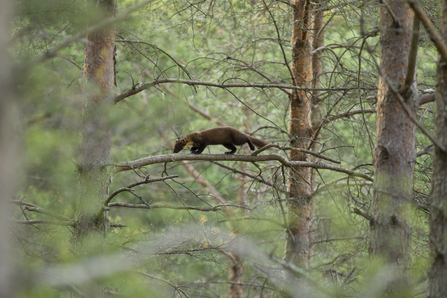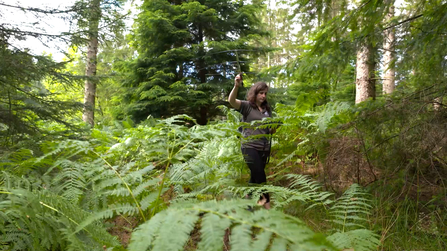The Forest of Dean’s pine martens have their sights set on new horizons, and Gloucestershire Wildlife Trust are on the lookout for new volunteers to track their movements.
Since their reintroduction over the last few years the pine martens have settled in well. Not only have they continued to breed year on year, but ongoing monitoring has revealed that the martens have begun to expand their territories beyond the Forest, heading up the Wye Valley and towards the Brecon Beacons.
This is a significant step forward for the survival of the species in the UK, and it’s likely that some of the dispersing juveniles will head in the same direction.
Following their massive decline in the nineteenth century, pine martens had lingered on in parts of Wales in low numbers. However, such small populations are not sustainable and with low genetic diversity and few breeding opportunities, the Welsh population was deemed functionally extinct and unable to recover on its own.
To remedy this, 51 martens were moved by Vincent Wildlife Trust from Scotland under license between 2015 and 2017 to breathe new life into the Welsh population. These Welsh martens are now thriving, and like those in the Forest of Dean and Wye Valley, they too have begun to expand their numbers and their range.
“A key aim of the reintroduction to the Forest of Dean was that these two groups of martens would one day meet up" says Jamie Kingscott, Pine Marten Project Manager at Gloucestershire Wildlife Trust. "This will hopefully maintain genetic diversity in both populations and improve the species’ chances of survival in the future. It’s fantastic to see the martens doing so well and recolonising their former range, we’re excited to see how far they’ll go.”


